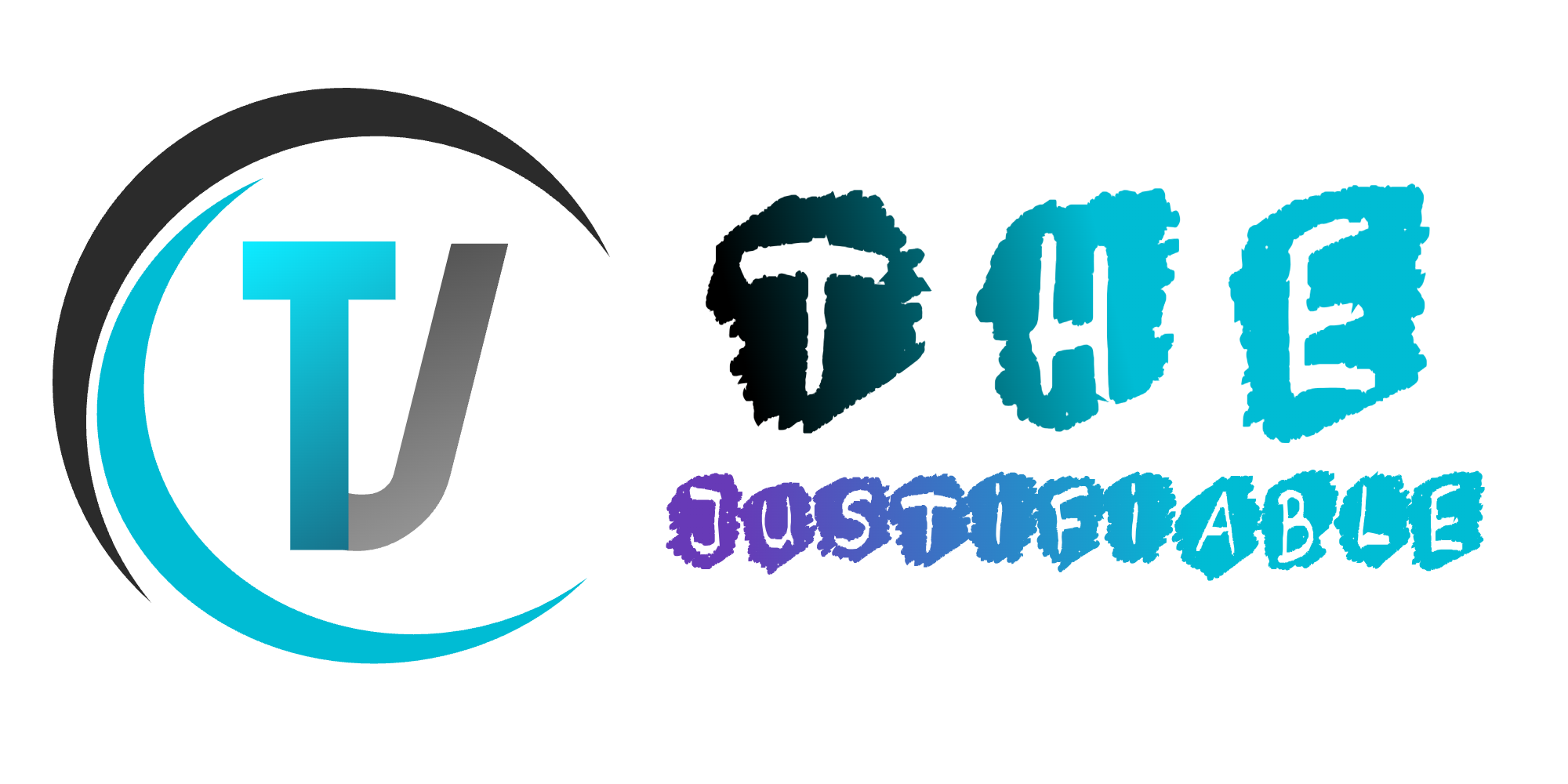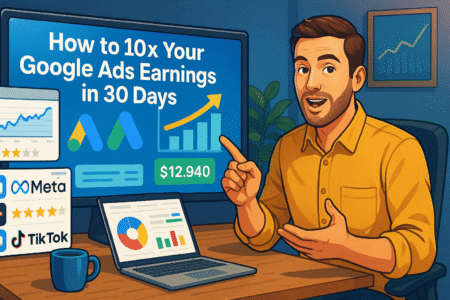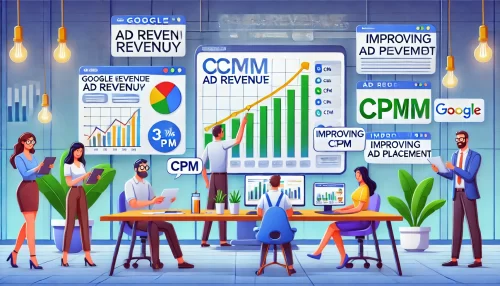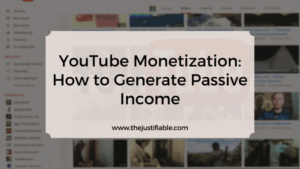Table of Contents
What’s the smartest way to earn real revenue from your game without annoying players? Is there a way to boost ad earnings, increase in-app purchases, and still keep gameplay fun and fair? If you’ve ever wondered how top developers handle unity monetization without compromising the player experience, you’re in the right place.
In this guide, we’ll break down ten practical, proven monetization tricks that actually work inside Unity. Whether you’re building your first mobile game or looking to scale an existing title, these strategies can help you monetize smarter and grow sustainably.
Let me walk you through proven monetization tricks starting with one of the most overlooked: ad mediation.
1. Maximize Fill Rates With Multi-Ad Network Mediation
Most developers rely on Unity Ads by default—and that’s not a bad place to start. But sticking to just one ad network can quietly cost you both impressions and income. Using mediation to connect multiple networks allows you to show more ads to more players, more often.
Why Unity Ads Alone Might Be Leaving Money on the Table
Here’s the truth: Unity Ads does a solid job, especially when you’re getting started. But no single ad network, not even Unity’s, can fill every single impression across all your users and regions. Sometimes it’s due to lack of demand in a certain country. Other times, it’s because other networks would have paid more—but you never gave them a chance.
Let me break it down with a quick example. Say you have a player in Southeast Asia. Unity Ads might not have a high-paying ad to show them at that moment, so the opportunity passes. But if you were using a mediation layer that included networks like AdMob, one of them might’ve had a better offer ready. That’s money you could’ve earned.
The core idea here is coverage. Every missed impression is a missed chance to earn. Relying solely on Unity Ads increases the odds of lower fill rates, lower eCPMs, and ultimately, lower revenue. Mediation plugs those holes.
Best Mediation Tools To Supercharge Ad Revenue
You’ve got options—and some are definitely better depending on your game’s scale, region, and genre. These are a few mediation tools I’ve seen work really well, especially when paired with Unity:
- Unity LevelPlay (formerly IronSource Mediation): Works seamlessly with Unity and offers robust A/B testing, real-time bidding, and user-level data. This one is especially great if you’re already deep into the Unity ecosystem.
- Google AdMob Mediation: AdMob has one of the largest advertiser pools and supports both traditional waterfall and real-time bidding. If you’re targeting global markets, this is a strong choice.
- AppLovin MAX: Known for aggressive optimizations, MAX excels in eCPM maximization and has deep reporting features. It’s also well-suited for fast-scaling games or studios.
- Helium by Chartboost: Helium is a bit newer but growing quickly. It offers transparent data access and a dev-friendly interface if you like more control over your ad logic.
When choosing a tool, think about:
- How easy the SDK is to integrate into your current Unity setup
- Whether you need support for both bidding and waterfall models
- How much transparency and control you want over ad performance
You don’t need to test them all at once. Start with one that complements Unity well—LevelPlay is usually the easiest for beginners—and layer in others as your game grows.
How To Set Priorities and Waterfalls That Actually Convert
Setting up your ad waterfall sounds more intimidating than it actually is. A waterfall is basically a prioritized list of ad networks. The highest paying ad gets the first shot at filling the impression, and if it passes, the next network in line gets a try.
But here’s where it gets interesting: you can set floors and rules to make sure the process aligns with your revenue goals.
Here’s how you can approach it:
- Use historical eCPM data to set your initial priorities. Mediation platforms usually provide this.
- Set minimum eCPM floors for each network to avoid showing ads that pay peanuts.
- Create country-specific waterfalls if you have traffic coming from diverse regions. What works in the U.S. won’t be the same as what works in Brazil or India.
- Enable real-time bidding where possible. It reduces the complexity of waterfall setups and lets networks bid on each impression in real time—often increasing your yield.
Most mediation tools make it drag-and-drop simple to adjust the order of networks. You can also A/B test different waterfall configurations to see what brings in more revenue without affecting user experience.
The biggest trap I see is setting it up once and forgetting about it. Optimization is ongoing. Your user base shifts, advertiser demand changes, and new networks pop up all the time. Make it a habit to check your data weekly—especially your fill rate, eCPM, and ARPDAU.
2. Use Rewarded Ads To Boost Engagement and Retention

Rewarded ads are one of the few monetization strategies that players don’t just tolerate—they often appreciate. When used well, they can enhance gameplay, improve retention, and still bring in solid revenue.
Why Rewarded Video Ads Outperform Banner and Interstitials
If you’ve ever felt annoyed by a pop-up ad interrupting your game, you’re not alone. Players feel the same way. That’s why rewarded video ads are such a game-changer. They let players choose to watch an ad in exchange for something valuable, which shifts the entire experience from frustrating to rewarding.
Here’s what makes them stand out:
- Higher completion rates – Because players opt in, completion rates for rewarded videos often reach over 90%.
- Better engagement – Players are more likely to engage when there’s a direct benefit, like extra lives, bonus coins, or power-ups.
- Improved retention – Well-timed rewards can keep players from churning. For example, offering a rewarded ad right after a failed level gives them a second chance without penalty.
- Non-disruptive – Unlike interstitials, which can break the flow of gameplay, rewarded ads happen when the player initiates them. That builds trust and keeps the experience smooth.
From what I’ve seen, players even expect rewarded ads in many mobile games now. They’re a familiar part of the experience—and when executed with care, they’re one of the few ad formats that feel like a win-win.
Effective Reward Ideas That Keep Players Coming Back
The secret to successful rewarded ads isn’t just about showing them—it’s about giving the right reward. If the incentive feels weak or irrelevant, players will ignore the ad. If it’s too generous, it can mess with game balance.
Here are a few reward ideas that tend to work well across different types of games:
- Extra lives or continues – Great for puzzle and arcade games where players might fail often. It gives them one more try without losing progress.
- Double or bonus currency – If your game uses coins, gems, or other in-game currencies, offering a multiplier after completing a task works well.
- Exclusive items or boosts – Offer temporary power-ups, shields, or special weapons that players can only access through ads.
- Speed-up timers – In idle or builder games, letting players watch an ad to cut wait times is a strong incentive.
- Daily bonus enhancers – Use rewarded ads to double or enhance daily login rewards, which gives players a reason to check in every day.
Let me share an example. In one idle RPG I played, I could watch a 30-second ad to double my offline earnings. That one tiny reward kept me opening the game every morning. I wasn’t just watching the ad—I was looking forward to it.
When choosing rewards, always make sure they align with your game’s economy. You want to enhance the experience, not break it. Test different rewards to see which ones players actually use, and tweak the balance from there.
Timing and Placement: When Players Are Most Likely to Convert
Even the best rewards won’t matter if players never see the option to earn them. That’s why timing and placement are just as important as the reward itself. Ideally, you want to show the rewarded ad prompt when players are already primed for it—when it feels like a natural part of their experience.
Here are a few smart moments to present a rewarded ad:
- After a level failure – Offer to continue the level or get a bonus item if they watch an ad. This reduces frustration and gives them a sense of control.
- Right before a big challenge – Let players watch an ad to get a power-up or bonus before facing a boss or hard level.
- At the end of a session – Prompt players to double their session rewards before they close the game. It’s a good hook to bring them back later.
- During idle or passive moments – If your game has any wait times or passive progression, offer an ad that speeds things up.
- Inside the shop or upgrade menu – A subtle button that says “Watch Ad for Free Coins” inside the store feels like a bonus, not a distraction.
What you want to avoid is popping up rewarded ads in places where they interrupt core gameplay or confuse the user. The more optional and natural it feels, the better your performance will be.
A tip that’s worked well for some devs I know is adding a small, persistent icon or button in the corner of the screen. This lets players access rewarded ads on their own terms—but still reminds them it’s there.
You’ll also want to keep an eye on your ad frequency. Too many prompts can lead to fatigue. A good rule of thumb is no more than 3–5 rewarded ad opportunities per session, depending on session length and game type.
3. Leverage In-App Purchases Without Killing Gameplay
In-app purchases (IAPs) can be a major revenue driver, but if handled poorly, they can frustrate players and cause drop-off. The goal is to offer value, not pressure. When done thoughtfully, IAPs can enhance the experience and still feel completely optional.
Smart IAP Design That Doesn’t Feel Like a Paywall
No one likes hitting a wall in a game and realizing the only way to continue is by paying. It breaks immersion and can feel unfair. A smart IAP strategy focuses on adding value rather than blocking progress.
Here’s how you can approach it:
- Offer cosmetic items – Skins, themes, or avatars that personalize the game without affecting mechanics are often welcomed.
- Sell time-savers, not power – Let players buy speed-ups or convenience without giving them a competitive edge over others.
- Make progression feel natural – Avoid sudden difficulty spikes that hint at needing to buy power-ups. Instead, design challenges that reward skill and offer purchases as a shortcut, not a necessity.
- Use soft prompts, not hard gates – Instead of locking features behind paywalls, offer small nudges like “Want to level up faster?” or “Unlock this bonus character.”
You can also allow players to earn small amounts of premium currency through gameplay. This builds trust and helps players see the value in your IAPs before deciding to spend.
It’s all about respecting player choice. When players feel like they want to buy instead of have to, they’re more likely to come back—and spend more over time.
Hybrid Monetization: How To Balance IAPs and Ads
Combining IAPs with ads is often the best strategy for Unity monetization, especially for mobile games with a broad audience. The challenge is balancing the two in a way that doesn’t undercut either one.
Here are a few ways to do it effectively:
- Use ads to promote IAPs – Rewarded ads can give players a taste of premium content. For example, “Watch an ad to try this weapon for one battle” can lead to purchases later.
- Segment your audience – Some players will never pay, but they’ll watch ads. Others hate ads but will spend money. Let each group choose their preferred value path.
- Avoid overwhelming the player – If you’re showing too many ads and asking for money constantly, it can feel exploitative. Make sure there’s breathing room between prompts.
- Tie ads and IAPs together – Allow players to earn discounts or bonus content through ad interactions. For example, “Watch 5 ads to unlock a special store item.”
One thing that’s worked well in my experience is offering ad-free IAPs. Some players are willing to pay just to remove ads—and that’s another valuable revenue stream.
It’s not about squeezing the most money out of every player. It’s about offering value in different ways, so each player can enjoy the game in their own style.
Psychological Pricing Tactics That Actually Drive Sales
Pricing is more than just choosing a number. It’s about understanding how people perceive value. You don’t need to be a psychologist to make smart pricing decisions, but knowing a few core principles can make a huge difference.
Here are a few tactics that work well in IAP design:
- Use price anchoring – Show a higher-priced item next to a mid-priced one. Players often choose the middle option, even if they weren’t planning to spend that much.
- Offer bundles – Combine multiple small items into a discounted pack. Players love feeling like they’re getting a deal.
- Use charm pricing – Prices like $0.99 or $4.99 feel cheaper than $1.00 or $5.00, even though the difference is tiny.
- Introduce limited-time offers – A countdown or daily deal adds urgency and can boost conversions.
- Reward the first purchase – Offer a small bonus or exclusive item to anyone making their first buy. This helps break the barrier to spending.
Also, keep the price range flexible. Not everyone wants to spend $10. Offer a few low-entry options alongside premium packs to make sure you’re not losing out on casual spenders.
4. Optimize Ad Placement Using Player Behavior Data
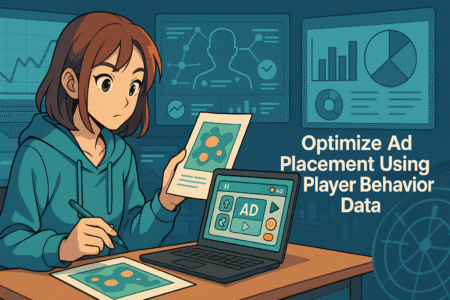
Guessing where to put ads might get you started, but using real player behavior to guide placement is how you unlock serious revenue. When you analyze how players move through your game, you can place ads where they make sense—without disrupting the fun.
How To Analyze Session Data for Monetization Opportunities
Your game’s analytics can tell a detailed story—how long players stay, where they quit, what they engage with, and how often they come back. This information is gold when it comes to monetization.
Here’s what to look for:
- Session length – Players who spend more time in-game may tolerate more ads or longer rewarded videos.
- Drop-off points – If you notice users quitting after a certain level or moment, try inserting a rewarded ad there to offer help or bonuses.
- Level retries – If players replay levels frequently, that’s a great moment to offer continues via ads or IAPs.
- Inactivity – Long pauses might indicate that a player is distracted or stuck. Prompting a rewarded ad during that time can gently re-engage them.
You don’t need to analyze everything at once. Start with one or two metrics and look for patterns. Tools like Unity Analytics or Firebase make this easier with visual dashboards and event tracking.
When players feel like ads are helping them progress instead of interrupting, they’ll be more likely to engage—and return.
Tools To Track Player Flow and Monetization Triggers
Tracking player flow is all about understanding where players go, what they interact with, and how long they stay engaged. There are several tools that can help you map this out and connect it to your monetization strategy.
Here are a few options worth exploring:
- Unity Analytics – Built into the Unity ecosystem, this tool tracks sessions, custom events, and user funnels. You can set triggers to analyze ad interactions and IAPs.
- GameAnalytics – Great for free-to-play games, this tool offers behavior tracking, heatmaps, and monetization insights without a steep learning curve.
- Firebase – Offers deeper insights for retention, player cohorts, and lifetime value. You can also integrate with Google Ads or AdMob for ad-specific data.
- Amplitude – Known for powerful behavioral analytics, it helps you understand how player segments behave differently and which ones are the most profitable.
Using these tools, you can build a clear picture of how players move through your game—and more importantly, where to place monetization triggers without hurting engagement.
One trick that works well is tagging every key point in your game where players make a choice. Whether it’s starting a level, opening a store, or quitting, these decision points are ideal for monetization cues.
Avoiding Ad Fatigue: How Much Is Too Much?
It’s tempting to show as many ads as possible, especially when you’re just starting out. But too many ads can backfire—players might uninstall your game, leave negative reviews, or tune out completely.
So how do you know when it’s too much?
Here are a few signs and guidelines:
- Watch your churn rate – If your retention metrics drop after introducing more ads, that’s a red flag.
- Track ad frequency per user – Most mediation platforms will show how often users are seeing ads. If it averages more than 5–7 per session, you may be overdoing it.
- Listen to user feedback – Check reviews or community comments. If people are complaining about ads, they’re probably seeing too many.
- Test different pacing – Run A/B tests with different ad frequencies to see what balances revenue and retention best.
A useful trick is to use session-based ad logic. For example, only show interstitials after a player has completed two or more levels or played for at least three minutes. That way, new users aren’t bombarded right away.
Think of ads as a tool for value exchange, not a tax on the player. The best ad placements are the ones that feel like they belong.
5. Localize Pricing and Ads for Regional Revenue Growth
Not all players are the same—and treating them as if they are can seriously limit your revenue. Adapting your monetization strategy by region is one of the smartest moves you can make if you’re looking to grow globally.
Why One-Size-Fits-All Monetization Doesn’t Scale Globally
It might seem easier to set a flat price or use the same ad setup across every country, but that kind of approach leaves money on the table. Different regions have different purchasing power, cultural preferences, and expectations when it comes to mobile games.
Here’s what can vary by region:
- Willingness to pay – Players in North America or Japan may be used to spending money in games, while those in developing markets often expect free content.
- Ad engagement habits – In some regions, rewarded video ads perform incredibly well; in others, users might ignore them entirely or be annoyed by interstitials.
- Currency value and pricing sensitivity – A $5 IAP might feel like pocket change in one region and unaffordable in another.
By treating your audience like one big group, you risk frustrating some players while underserving others. The better path is localization—adapting your monetization based on regional behavior and expectations.
It doesn’t have to be overwhelming either. Start by identifying your top three markets outside your home region. From there, you can begin adjusting your strategy where it’ll make the biggest difference.
Setting Region-Specific Ad Floor Prices in Unity
One area where you can start localizing right away is with ad floor pricing. Unity allows you to set minimum eCPM (effective cost per thousand impressions) rates by region, which can help you get the most value from your traffic.
Here’s how it works:
- Open your Unity Ads dashboard and go to your project settings.
- Navigate to the monetization section and find the option for setting country-specific floors.
- Choose your target regions—for example, the U.S., Germany, and Brazil.
- Set different floor prices based on performance data or known market benchmarks.
Why this matters: If you set a global floor price that’s too high, you might see low fill rates in countries with lower advertiser demand. On the flip side, if your floor is too low in high-performing regions, you’re undercutting your potential revenue.
Here’s a quick tip: monitor your eCPMs by country for a week or two. Then, set floor prices slightly below the average eCPM in each key region. This keeps your inventory attractive to advertisers while still ensuring decent returns.
You don’t need to micromanage every country. Start with a few key ones that generate the most impressions or installs, then expand as needed.
Tools for Localized IAP Pricing Without Extra Dev Time
Localizing IAP pricing might sound like a massive task, but the good news is Unity makes it fairly painless. With the right tools and a bit of setup, you can automatically adjust IAPs based on region and currency.
Here are a few helpful options:
- Unity IAP with Google Play and Apple’s regional pricing tools – These platforms automatically convert your base price into local currency and offer suggestions based on local norms.
- Unity’s IAP Catalog – This feature allows you to configure pricing tiers per region right in the Unity Editor, without needing to touch code.
- Xsolla and other third-party services – If you’re managing a large game or multiple storefronts, services like Xsolla offer advanced pricing tools, taxes, and region-based discounts.
And a pro tip: watch your conversion rates by region. If a country has lots of players but low purchase rates, adjusting prices might unlock new revenue without changing anything else in your game.
The goal isn’t to force players to spend—it’s to make spending feel fair. Pricing that respects local economies builds trust and often leads to more long-term engagement.
6. A/B Test Monetization Elements for Continuous Wins

Monetization isn’t a one-time decision. The most successful games are constantly testing small tweaks to see what performs better. With A/B testing, you don’t have to guess—you can let the data guide you.
What To Test: Ad Types, Pricing, Layouts, and More
If you’re not sure where to start with A/B testing, that’s totally normal. The key is to focus on one variable at a time so you can measure the true impact.
Here are some monetization elements that are worth testing:
- Ad types – Do rewarded videos perform better than interstitials? What about banners vs. native ads?
- Ad frequency – How often can you show ads before users drop off? Testing a 2-ad vs. 5-ad-per-session model could reveal sweet spots.
- IAP pricing – Try two versions of your store: one with slightly lower prices, and one with value bundles.
- Offer timing – Does showing an IAP right after a win convert better than after a loss?
- UI layout – Simply moving the “Buy” button or highlighting a different item can impact behavior.
The more players you have, the faster you’ll get results. But even with smaller user bases, A/B testing can highlight what your audience responds to—and what they ignore.
It’s less about making big changes and more about stacking small, data-backed wins over time.
Unity A/B Testing Features You Should Be Using Now
Unity offers built-in tools to help with A/B testing, and they integrate nicely with your existing workflow.
Here’s what you can use right now:
- Unity Remote Config – This tool lets you change variables like ad frequency, button placement, or pricing tiers without publishing a new build. You can run experiments with different settings across player segments.
- Unity Analytics Funnels and Events – You can set up funnels to see how many players see an offer, how many click, and how many convert. This is essential for evaluating your test results.
- Unity Player Groups – These allow you to segment your users and apply different configurations to each group, which is ideal for testing two versions of your monetization strategy side by side.
Setting up a test doesn’t have to be complex. Even something as simple as testing whether a “Daily Bonus” prompt works better with or without an ad option can give you insights that lead to higher retention and revenue.
The best part is that you don’t have to guess. You can act on real behavior—and build your monetization strategy around what actually works for your players.
Measuring Success: Interpreting Results Like a Pro
Running an A/B test is just the beginning. Interpreting the results correctly is what makes it useful.
Here’s what to look for:
- Conversion rate – How many users completed the action you were testing? Whether it’s an ad view, a purchase, or a button click, this metric shows impact.
- Session length and retention – Sometimes a test improves revenue short-term but hurts long-term play. Keep an eye on daily active users and session duration to make sure your changes aren’t pushing players away.
- ARPDAU (Average Revenue Per Daily Active User) – This gives you a high-level view of how monetization changes affect your income on a per-user basis.
- Confidence level – Use statistical significance calculators to make sure your test results aren’t just noise. A 95% confidence level is a good benchmark.
And don’t forget—sometimes, a test won’t show dramatic changes. That’s okay. Even a 2–5% improvement in revenue or retention can add up over time, especially if you’re running multiple experiments each month.
Small wins, when repeated and refined, are how the best monetization strategies are built.
7. Monetize Idle and Background Gameplay Creatively
Idle gameplay presents a great opportunity for monetization without constantly asking players to interact. If your game includes any background progress or passive systems, you can tap into that time in creative ways that respect the player and still generate revenue.
What Counts as Playable Idle Time—and How To Monetize It
Idle time isn’t just when players leave the game open. It’s any period where your game is progressing with little or no input. This includes:
- Offline rewards — when the game keeps earning currency while the player is away
- Auto-battling systems — like in RPGs or idle clickers
- Production timers — common in city builders or farming sims
- Background upgrades — like skill trees that improve over time
These mechanics are already doing the heavy lifting. The trick is layering monetization into them in a way that feels optional but rewarding.
Here are a few ways you can monetize idle time:
- Rewarded ads to double offline earnings
- Premium boosts that speed up passive gains
- Limited-time offers based on idle returns (e.g., “Collect 5x Gold in the next hour”)
Players already love the feeling of earning while doing nothing. If you tie in monetization without making it feel like a paywall, it becomes a natural extension of the experience.
Using Timer-Based IAPs and Ads During Idle Moments
Timers are one of the most underutilized triggers in mobile game monetization. They offer an easy way to connect value to time—something that fits perfectly with idle or background systems.
Here’s how to use timers for smarter monetization:
- Time acceleration packs – Let users buy boosters that reduce building or upgrade wait times.
- Ad skips for cooldowns – Offer rewarded ads to skip a timer or speed up production. For example, “Watch an ad to finish this task instantly.”
- Daily idle boosts – Create an offer that doubles rewards for the next 12 or 24 hours. It adds urgency without pressure.
- Time-limited events – Let the player earn bonus rewards during idle time if they activate a special boost or log in during a window.
What’s important is to present these opportunities in a clear and respectful way. A pop-up at the right moment—like when a user returns from being away—can increase engagement without being intrusive.
These small additions can turn idle players into active spenders, especially when they’re timed around core gameplay loops they already enjoy.
Passive Revenue Tactics That Don’t Annoy Players
The key to successful passive monetization is subtlety. Players who enjoy idle games often do so because there’s less pressure. If your monetization strategy gets too aggressive, it breaks the vibe.
Here are a few player-friendly ideas:
- Idle ads in exchange for background income – Offer an option to keep ads running in the background for a percentage boost to idle gains.
- “Come back for more” notifications – Instead of pushing ads, send smart reminders about bonus collection windows or boosts available on return.
- Auto-collect systems with paid upgrades – Let the game collect idle rewards automatically for free, but offer a premium system that boosts the yield.
- Dynamic pricing based on return time – The longer they’re away, the bigger the bonus offer—but only if they return soon.
Think of it like building a relationship. You’re rewarding players for just being part of your game, even if they’re not always active. And by giving them choices, not pressure, you’ll keep that relationship strong over time.
8. Implement Battle Passes and Time-Limited Offers

Battle passes and limited-time offers give your monetization strategy structure and urgency. They work especially well when you want to turn casual players into regulars by offering consistent, high-value rewards over time.
Battle Passes vs. Traditional IAPs: What Converts Better?
Both monetization models have their strengths, but they serve different player mindsets.
Traditional IAPs are great for:
- Instant gratification
- High-spending players who want an edge
- Cosmetic purchases that feel optional
Battle passes, on the other hand, are great for:
- Long-term engagement and retention
- Encouraging daily play
- Providing a sense of progress and achievement
Here’s why battle passes tend to outperform standalone IAPs in many games:
- Higher perceived value – A $5 battle pass can include 20+ items over time, making it feel like a deal.
- Daily or weekly quests – These create a habit loop that keeps players checking in regularly.
- Free and premium tiers – Letting everyone participate builds goodwill, while giving paying players extra value.
It’s not about replacing traditional IAPs—it’s about layering in a system that rewards commitment. Many players will still buy individual items, but the battle pass offers a reliable monetization stream that renews each season.
Creating FOMO With Limited-Time Monetization Offers
Fear of missing out (FOMO) is a powerful driver—when used responsibly. Time-limited offers work because they give players a reason to act now instead of putting off a purchase.
Here are a few effective examples:
- “First Day” bundles – A discounted pack available only during the first 24–48 hours after install.
- Event-based shops – Temporary stores with unique items that rotate every week.
- Countdown timers – Displaying how long an offer is available adds subtle urgency.
- Milestone triggers – After reaching a key level or finishing a tough challenge, unlock an exclusive bundle.
The trick is not to overdo it. If everything is limited-time, players start ignoring the urgency. Choose moments that feel special and tie them into gameplay.
You want players to feel like they’re getting rewarded for staying engaged—not punished for missing out. That’s the sweet spot.
Frequency and Timing: How Often To Refresh Offers
It’s easy to fall into the trap of spamming offers just because they perform well. But offer fatigue is real. Players quickly get used to a rhythm—and if they feel like the same deals are always available, they stop paying attention.
A good rule of thumb:
- Battle passes – Refresh every 3 to 4 weeks. That gives players enough time to complete them without feeling rushed.
- Daily offers – Keep these consistent, but rotate the content or theme to avoid boredom.
- Weekly bundles or limited-time shops – Once a week is ideal for event-based content.
- High-impact seasonal events – A few times a year (holidays, game anniversaries) are great for major promotions.
Consider tying your refresh schedule to gameplay loops. If players are completing goals every few days, space offers around those natural breaks. And always track performance. If one type of bundle keeps converting, experiment with when and how it’s shown.
The goal isn’t to sell as much as possible—it’s to create a cadence of value that feels aligned with the pace of your game.
9. Use Unity Analytics To Pinpoint Monetization Gaps
It’s tough to improve what you can’t see. That’s where Unity Analytics becomes a game-changer. By tracking how players behave, when they spend, and where they drop off, you can uncover opportunities to boost your monetization without guessing.
Setting Up Funnels and Events To Track Monetization Behavior
Funnels and events are the backbone of tracking in Unity Analytics. They help you map out the exact paths players take—and where they stop short of spending.
To get started, think of key monetization actions you want to track, such as:
- Entering the shop
- Viewing an offer
- Watching a rewarded ad
- Making an in-app purchase
- Using premium currency
Each of these becomes a custom event. Once you’ve added these events in your game code, you can set up funnels in the Unity dashboard to see how many players complete each step in your intended monetization journey.
For example, a basic IAP funnel might look like this:
- Open store
- View premium pack
- Tap “Buy”
- Confirm payment
If lots of players reach step 2 but drop off at step 3, maybe your pricing is too high or your value proposition isn’t clear.
This level of insight allows you to optimize based on what actually happens in your game—not assumptions.
Key Metrics That Predict Revenue Spikes or Drop-Offs
Once your funnels and events are live, the next step is knowing what to watch. There are a few metrics that can serve as early indicators of whether your monetization is trending up—or about to hit a snag.
Here are some to focus on:
- ARPDAU (Average Revenue Per Daily Active User) – This is your go-to metric for tracking daily monetization performance.
- Conversion rate – How many players are making at least one purchase or watching at least one ad.
- Session frequency – A drop in session count often comes before a dip in revenue.
- Retention + monetization combo – If players are sticking around longer but spending less, your monetization model may need refreshing.
- Drop-off rate in monetization funnels – Identifying exactly where users lose interest can help you fix friction points.
Tracking these numbers weekly (or even daily, if your user base is large) helps you react quickly to changes. You don’t need to get overwhelmed with data—just start by following a few key metrics that relate directly to your revenue goals.
Turning Insights Into Revenue: Real Dashboard Examples
Seeing the data is only useful if you know how to act on it. Unity’s Analytics dashboard provides several built-in views, but customizing your own dashboards based on monetization goals can be even more effective.
Let’s say you want to improve ad revenue. Here’s a simple dashboard setup that can help:
- Total Ad Views by Region
- Rewarded Ad Completion Rate
- eCPM by Ad Placement
- Ad Engagement vs. Session Length
This setup lets you quickly see if some regions underperform, if users are skipping ads, or if engagement drops off when too many ads are shown early in the session.
For in-app purchases, try tracking:
- Top-Grossing Items
- Conversion Rates by Price Tier
- First-Time Buyer Funnel
- Purchase Frequency Per User
Use color coding or trend lines to easily spot when things spike or dip. If your $4.99 pack suddenly performs better than your $1.99, it might be time to test bundling that higher-tier item in more offers.
These dashboards take a bit of time to set up but will save you hours of guesswork—and likely uncover new monetization angles you hadn’t considered.
10. Monetize Cross-Promotion and Non-Gaming Partnerships
Not every monetization strategy has to involve players pulling out their wallets. Cross-promotion and brand partnerships open up additional revenue streams while often enhancing the player experience, not interrupting it.
How To Use Unity Ads for Cross-Promoting Other Games
If you have multiple games under your belt—or even one in soft launch—you can use Unity Ads to cross-promote them. It’s a great way to increase installs and retain users within your own ecosystem.
Here’s how to make it work:
- Create a house ad campaign inside Unity Ads. This lets you serve ads for your own titles instead of third-party ads.
- Target players based on behavior. Promote your new RPG to players who have finished all levels in your puzzle game.
- Use strong call-to-actions. A quick trailer and a “Play Now” button is often more effective than generic banners.
- Track conversions. Unity lets you monitor installs and sessions generated by these internal promotions, so you know what’s working.
Cross-promotion isn’t just about retention—it can also reduce your paid user acquisition costs. Every user who switches to another one of your games is one less new player you have to pay to acquire.
Partnering With Non-Gaming Brands Inside Unity Games
Brand partnerships used to be limited to massive studios, but more indie developers are finding creative ways to bring in real-world sponsors. Unity’s ecosystem makes this more feasible than ever.
Here are a few ideas to explore:
- Sponsored in-game items – Think branded vehicles, outfits, or billboards.
- Rewarded brand offers – Let players watch a branded ad or engage with a mini-game to earn a unique reward.
- Event tie-ins – Time-limited content themed around a partner brand or product launch.
These partnerships are often facilitated through agencies or platforms like Unity Aura, which help connect developers with non-gaming advertisers.
The key is fit. You don’t want to jam in a partnership that makes no sense for your game. But a fantasy game with a medieval-themed energy drink sponsorship? That could actually be fun.
And because players opt in to these branded experiences, they’re more likely to engage and respond positively.
Creative Integrations That Don’t Disrupt Gameplay Flow
When you integrate external promotions into your game, the last thing you want is for them to feel forced. That’s where design-led monetization makes all the difference.
Here are a few creative (and non-disruptive) options:
- Skinned environments – Reskin a level with holiday or branded content during a time-limited event.
- Optional branded side quests – Players can take on a challenge involving a fictionalized version of a brand, without affecting the main story.
- Story-based product placements – Subtle nods within cutscenes or dialogue can go a long way without breaking immersion.
One of the smartest examples I’ve seen was a racing game that included real-world tire brands as part of its upgrade system. Players didn’t just accept it—they saw it as a sign of realism.
The best cross-promotions make your game feel more immersive, not less. If you can blend them into the gameplay naturally, they become a value-add rather than a distraction.
Start Monetizing Smarter With These Proven Unity Tricks
At the end of the day, Unity monetization isn’t about squeezing as much money out of players as possible—it’s about creating smart, respectful ways to grow your game’s revenue while keeping your players happy and engaged.
You’ve now got a full toolkit of strategies, from boosting ad fill rates and refining IAP pricing to launching battle passes and tracking user behavior with analytics. Whether you’re just starting out or looking to scale an existing title, these approaches can make a real difference.
Key things to remember:
- Data is your friend—use Unity Analytics to find what’s working (and what isn’t).
- Players love value. Whether it’s a smartly priced IAP, a well-timed ad reward, or a juicy battle pass, focus on what makes their experience better.
- Stay human. Your monetization strategy should always respect the player’s time, attention, and choices.
If even one of these tricks sparks an idea you can test this week, you’re already ahead. Keep iterating, keep listening to your data, and stay flexible. That’s how you build a game that earns well and plays even better.

